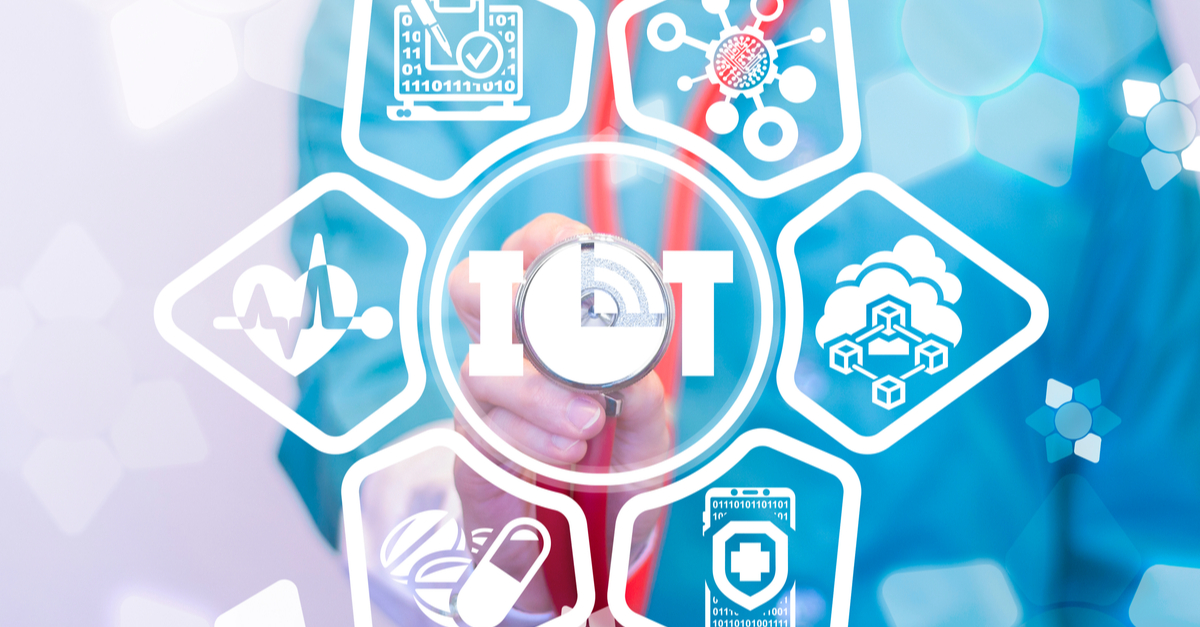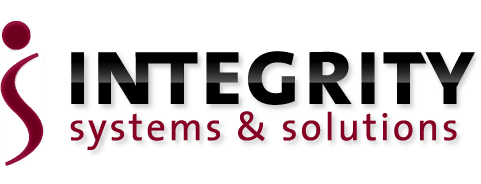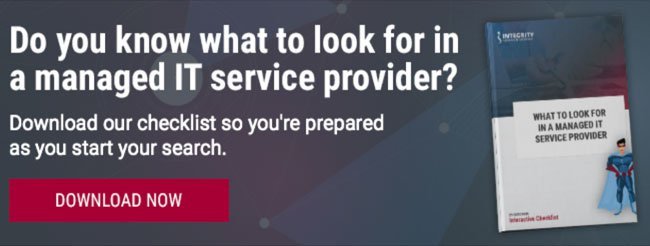
By: Daryl Smith on July 23rd, 2019
Your Healthcare and the IoT: What Medical Practices Need to Know
The Internet of Things (IoT) has begun to infiltrate the healthcare industry. Some estimate that by the year 2021 IoT in healthcare will reach almost $137 billion in sales. This new wave of technology will dramatically impact the healthcare industry in a variety of ways. This post will explore everything you need to know about IoT for your practice.
Do you know what to look for in a managed IT service provider?
Download our checklist to learn if you’re making the best choice for your practice.
What is IoT?
The Internet of Things (IoT) is the collection of medical devices and applications that connect to healthcare IT systems through online computer networks. Medical devices equipped with Wi-Fi allow the machine-to-machine communication that is the basis of IoT. IoT devices link to cloud platforms on which captured data can be stored and analyzed. Some of the many uses of IoT in healthcare include inventory management, workflow optimization, and medical device integration. And healthcare companies are working to create the technology necessary to make IoT happen in medical practices.
How IoT is Being Used Today
The Internet of Things (IoT) has opened up a world of possibilities in medicine: when connected to the internet, ordinary medical devices can collect invaluable additional data, give extra insight into symptoms and trends, enable remote care, and generally give patients more control over their lives and treatment. IoT is changing the way patients, hospitals and healthcare providers communicate. Here are a few examples of how IoT is enhancing medicine today:
-
Remote patient monitoring of people with chronic or long-term conditions such as diabetes, heart conditions, blood pressure, and asthma.
-
Tracking supplies can now be done electronically. This is an inexpensive and unobtrusive method of monitoring day-to-day activities in a hospital setting. Medical practices can monitor inventory and set up automated ordering.
-
Patients' wearable mHealth devices can send information to caregivers. For example, Fitbit uses the IoT to monitor personal health; this information can then be shared with a doctor to help identify and solve recurring health issues for patients.
-
Infusion pumps that connect to analytics dashboards and hospital beds rigged with sensors that measure patients' vital signs are two medical devices that can be converted to or deployed as IoT technology.
-
Many consumer mobile devices are built with Near Field Communication (NFC) radio frequency identification (RFID) tags that allow devices to share information with IT systems. RFID tags can also be placed on medical equipment and supplies so that hospital staff can remain aware of the quantities they have in stock.
-
Mobile apps which can act as patient portals, offering patients more convenience and more control over their own healthcare. Other mobile apps help assist patients in taking better care of themselves, such as in reminding them to take their medicine on time.
-
Enhanced drug management: Pills containing microscopic sensors that are the size of a grain of rice can send a signal to an external device, usually a patch worn on the body, to ensure proper dosage and usage. Patients also have access to the information, through a handy smartphone app, to track their personal performance and improve their habits.
How Some Healthcare Companies are Making Real Changes Using IoT
Mt. Sinai Medical Center in New York City effectively slashed wait times for 50% of their emergency room patients who are in need of inpatient care. It’s their partnership with GE Healthcare and new, IoT-driven software, known as AutoBed, that tracks occupancy among 1,200 units and factors in 15 different metrics to assess the needs of individual patients. It’s a highly effective system that highlights one of the more innovative and exciting uses of the IoT.
Modern hospitals require current software and hardware to function. Like all electronic devices, this equipment is prone to numerous risks — from power outages to system failures — that could be a matter of life or death. Instead of waiting for a device to fail, there are systems that monitor medical hardware, alerting hospital staff members if there’s a problem.
Breakthroughs are being made in the treatment of chronic disease such as diabetes. Many of these breakthroughs are a direct result of IoT. There isn’t just one innovation or device that’s helping treat chronic disease in the 21st century, it’s the combination of wearable technology, analytics, and mobile connectivity.
What is Responsible for This Rising Popularity of IoT
The dramatic increase in the popularity of IoT can be attributed to a cluster of advancements and changes in our society: In the tech industry, wearable devices have become more accessible and user-friendly. The cost of sensor technology to receive data has decreased. New wearables such as smart shirts, smart lenses, and smart bands have been introduced to the market. Analytics to capture and interpret the collected data have improved, and more people have better access to the internet.
Several other factors have contributed to the use of IoT in healthcare. Rates of chronic disease have risen, along with the demand for cost-effective treatment and disease management. The implementation of favorable government regulatory policies has made it more cost-effective to take advantage of IoT.
IoT Concerns for Healthcare Practices
While IoT is impacting the healthcare industry in a positive way it is still important to remember that it does not come without flaws. The increase of devices means an increased risk for security breaches.
Data privacy is a major concern when it comes to IoT as a patient’s personal information is necessary to the performance of the technology. Furthermore, devices that are in a patient’s possession can be hacked, stolen, or lost, and end up compromising the patient’s safety or your practice’s network. For example, healthcare apps contain plenty of sensitive information, such as social security numbers, prescriptions, and medical histories. Should hackers ever get ahold of this information, they’ll be able to steal their victim’s identity or resell the information on the dark web. In extreme cases, an attacker could have direct control over IoT equipment, causing potentially lethal results. Vulnerable medical devices are also gateways to a secured network. Hackers can use compromised IoT devices to sneak ransomware and other types of malware onto a network, causing service disruptions and preventing practitioners from providing responsive treatment.
Ways to defend your practice from attackers include:
- Using multi-factor authentication forces users to provide more information than just their username and password (e.g., SMS code, fingerprint, or retinal scan). By enabling this on your networks and devices, hackers will have a more difficult time accessing mission-critical data.
- Encrypting your data is another way to protect your business and your patients from a massive data breach. Encoding electronic health records while they’re being transmitted or left in storage prevents hackers from reading and stealing sensitive information. Everything that is transmitted across your network should be automatically encrypted to secure the communication between IoT devices.
- Installing intrusion prevention systems is a must. Since most IoT attacks are delivered via the internet, intrusion prevention systems are crucial to identify and block unauthorized connections to your network. This means hackers who try to remotely access or shut down your IoT equipment will be stopped before they damage your systems.
- Keeping security updates current is critical. IoT manufacturers occasionally release security patches for their gadgets. Get in the habit of downloading these updates as soon as they’re rolled out, or allow your devices to automatically download and update themselves to ensure their safety from the latest threats.
Conclusion
IoT is changing the healthcare industry. IoT has gone from the modern factory floor to tech-driven hospitals and medical facilities in a very short amount of time, and it’s a development that is already transforming the industry of healthcare IT. While this new technology does have security risks, there are steps you and your practice can take to keep patients’ data secured. We can expect to see more IoT in the years to come. We already see so many advancements with wearables. This tech is helping practices and hospitals stay organized, streamline processes and, most importantly, serve those in need.




